
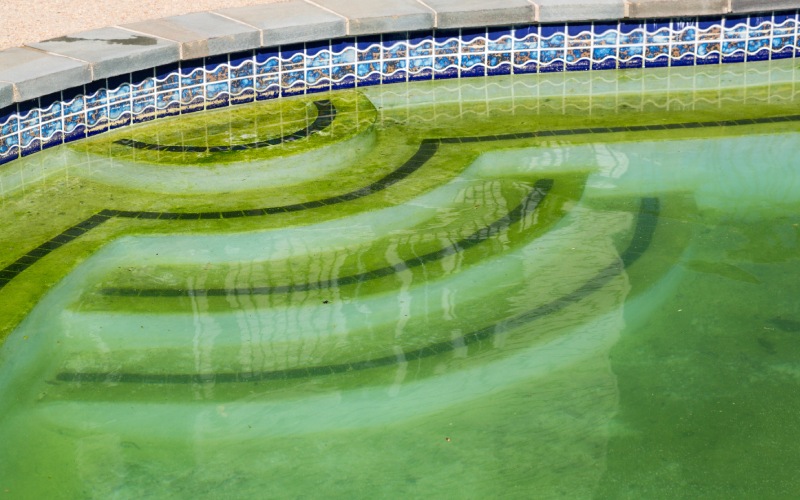
A good pool closing sets the scene for a faster, better pool opening, and although you can certainly minimize the potential for issues, you can’t always avoid them completely. Begin by using a pressure washer to thoroughly clean the pool cover, accessories, deck, and other pool components. Take the cover off, fold and put in the cover bag. Next, reinstall all pool equipment, including jets, lights, ladder, and diving board.. Reassemble pool equipment and start the circulation. Vacuum the pool bottom carefully, preferably with dirty water going to waste. Shock the pool water with chlorine either liquid or granular to raise the free chlorine level to 10 ppm. Scrub the pool walls with a brush, and clear the surface of the water. Next, examine your pool carefully and test the water. Pay close attention to these key symptoms and their corresponding underlying issues: Algae and bacteria can build up in the water remaining after draining, even in cool weather. While algae growth may be less prevalent during winter, it can still develop in stagnant water in the spring before or during opening. Shock treat the pool with a high dose of chlorine to eliminate any existing algae and prevent future blooms. Regularly brush and maintain the pool surface to inhibit algae growth and maintain water quality. Debris accumulation can occur, even with winterization. Start by removing any debris with a skimmer or net. Thoroughly vacuum the pool to clear the bottom and walls. A pool brush can loosen stubborn debris before vacuuming. This process may need to be repeated a couple of times. A thorough backwashing of the filter and a clarifier or enzyme treatment will also help to restore water clarity. Repair minor liner damage promptly using a vinyl patch kit; however, it’s recommended to contact a professional to thoroughly assess any damages and conduct any repairs. While a pH imbalance in pools can be caused by sweat or chemical treatments, in spring, it can often be caused by rainwater or debris seeping in. Make sure to clear all debris out completely before trying to correct the pH balance. Use a reliable testing kit, and, as indicated, add a pH increaser or reducer per the manufacturer's recommendations. Re-test and adjust if needed. A stabilizer or buffer may help. These can happen from evaporation, dissolved minerals in the fill water, or chemical imbalances. Test the calcium hardness level of the pool water using a reliable test kit. A specialized calcium hardness reducer or flocculant can help. Diluting by partially draining and refilling may be necessary. Copper stains appear as blue or greenish-blue patches and result from copper-based algaecides, copper pipes, or copper-containing pool equipment. Rusty iron stains are often caused by corroded metal fittings or oxidized iron in the water supply. Manganese stains are uncommon, appearing as dark brown or blackish spots. Manganese contamination can occur from well water or water treatment processes. Tests are available to confirm the presence of these metals and special products to treat the issue. Shocking pool water can help as well. It’s important to identify the underlying cause of the contamination. Professionals often have access to more advanced water testing equipment for a more comprehensive analysis. If you're struggling to balance chemicals or pH levels or have additional features like a spa, fountain, or automated chemical dosing system, seek help, rather than risk having unsafe water. The People for Pools team always takes time to provide you with the education you need to maintain your pool properly, so if you have any questions, give us a call. Or, avoid the hassle of pool openings, and we’ll do it for you!Know Where to Start
Symptoms of Issues
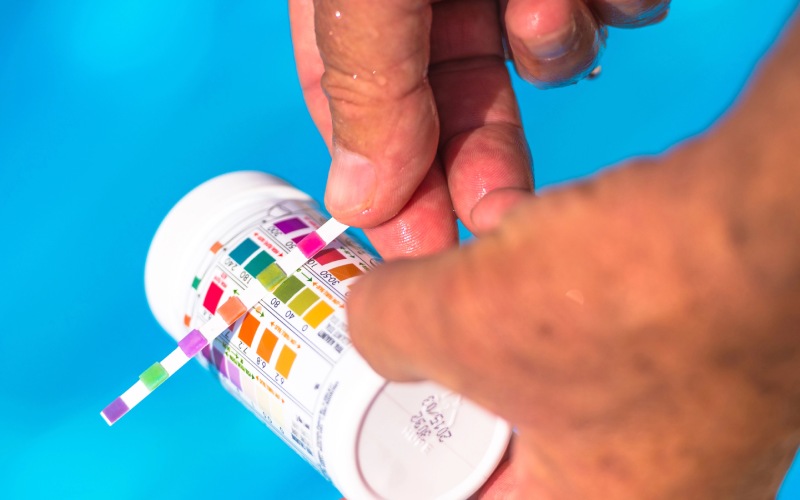
Troubleshooting
Algae and Bacterial Buildup
Water Clarity and Debris Removal
Liner and Pool Damage
pH Imbalances
Calcium Deposits
Metal Ions
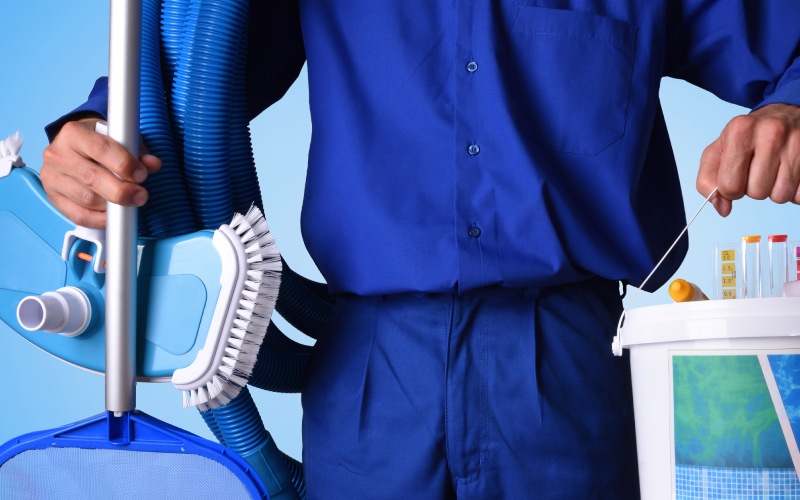
When to Consult a Professional
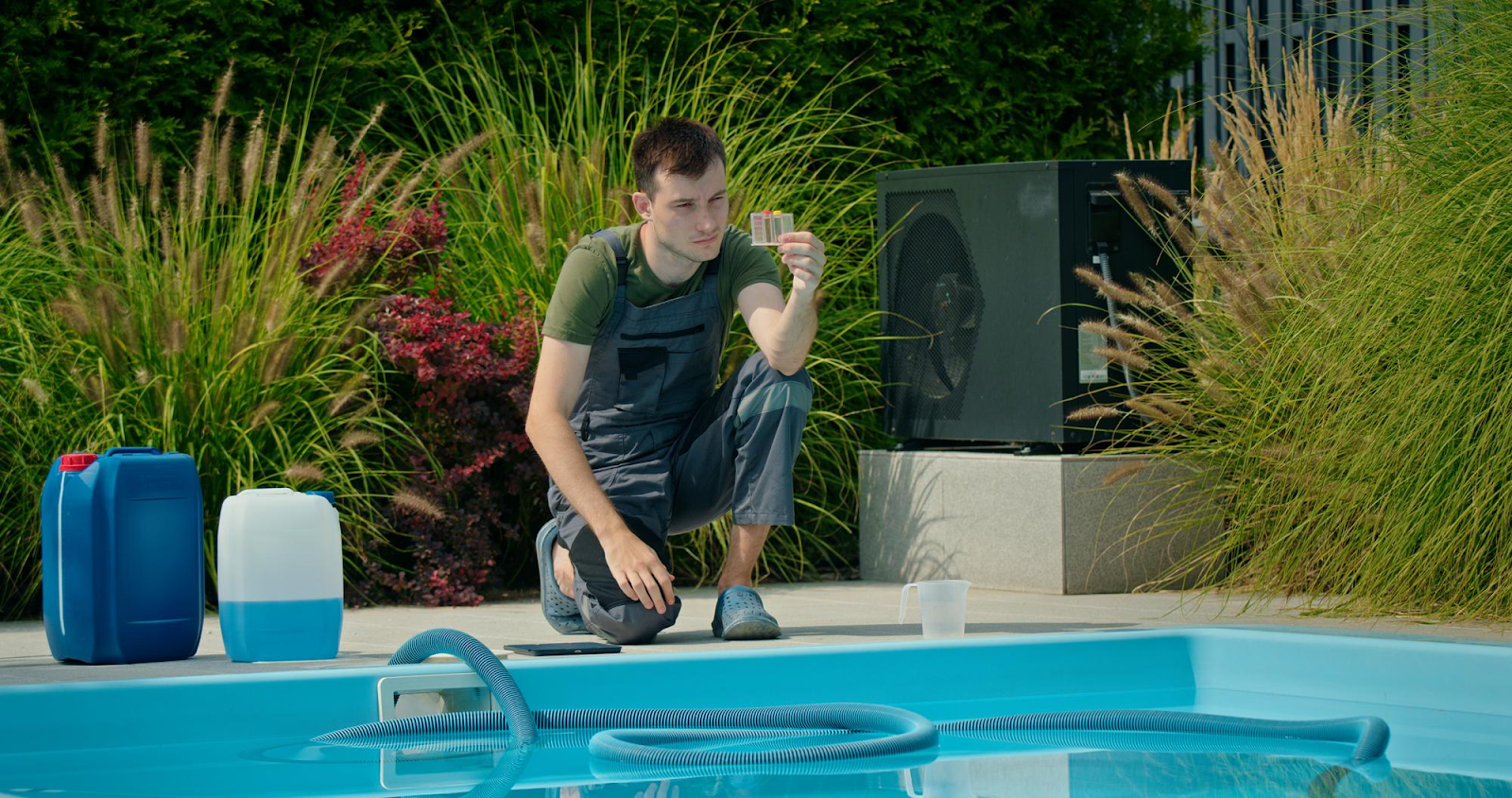
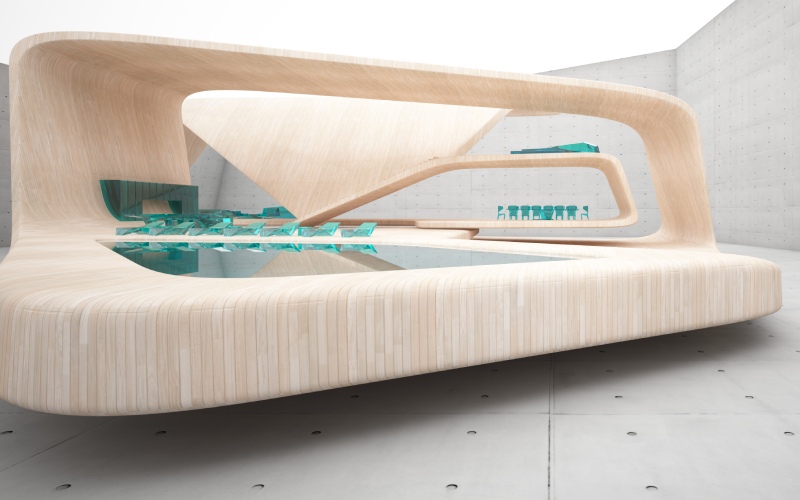
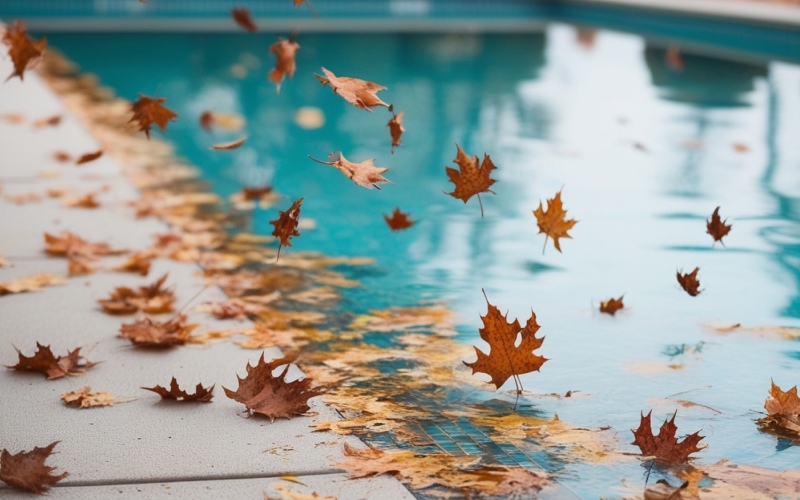
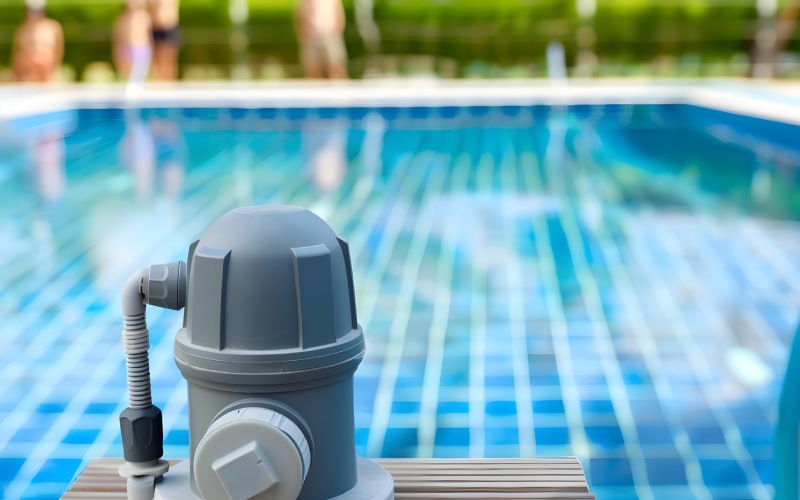
While we strive to provide as much useful information and tips as possible in our blogs, you may still have questions about your pool. That's okay! That's what we're here for. Give our team a call to discuss any questions you may have or the services you're interested in. Not only can we thoroughly answer your questions and concerns, but we can also help you regularly maintain your pool.
Give us a call, email us, or fill out and submit a form below and we'll respond promptly. We proudly service the Greater Toronto Area and can provide you with a free quote.

PEOPLE for POOLS is a professional pool company that can take care of your pool this season. Call us today to inquire about our pool maintenance service. Potential customers can receive a free quote for our services.